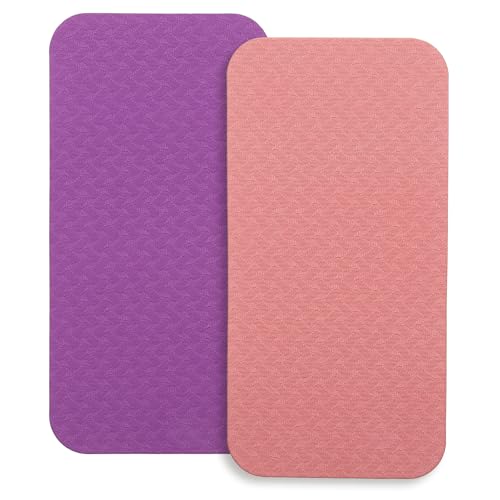Sewing is a timeless craft that blends creativity with precision, and mastering the backstitch is a key skill for any enthusiast. I’ve always found that once you get the hang of it, this stitch can transform your projects from ordinary to extraordinary.
In this step-by-step guide, I’ll walk you through each stage of the backstitch, sharing tips and tricks I’ve learned along the way. Whether you’re just starting out or looking to refine your technique, you’ll find the process easy to follow and enjoyable.
Understanding the Backstitch
The backstitch is a versatile and durable stitch essential for various sewing projects. It creates a strong seam that holds fabric pieces securely together. By alternating forward and backward stitches, it ensures extra reinforcement, preventing seams from unraveling. Here are key aspects of the backstitch:
- Structure: Each stitch goes backward, overlapping the previous one, which strengthens the seam.
- Applications: Ideal for seams that require high durability, such as garments, bags, and upholstery.
- Advantages: Offers flexibility and resilience, making it suitable for fabrics that stretch or move.
- Tools Needed: A standard sewing needle, thread, and consistent tension are necessary for effective backstitching.
- Technique Variations: Adjusting stitch length and thread thickness can tailor the backstitch for different materials and project requirements.
Understanding these elements helps in mastering the backstitch, ensuring your sewing projects are both professional and long-lasting.
Benefits of Mastering the Backstitch
Mastering the backstitch brings numerous advantages to your sewing projects:
- Enhanced Durability: The backstitch creates strong, secure seams that withstand regular use and washing, ensuring your garments and accessories last longer.
- Versatility: This stitch adapts to various fabrics, from lightweight cotton to heavy denim, making it suitable for diverse projects like clothing, upholstery, and quilts.
- Professional Finish: Achieving consistent, neat stitches elevates the overall appearance of your work, giving it a polished, professional look.
- Efficiency: Once mastered, the backstitch allows for faster sewing without compromising quality, streamlining your workflow on large or intricate projects.
- Flexibility: The stitch’s structure provides flexibility, allowing seams to move with the fabric without breaking, which is essential for wearable items.
- Reinforcement: Alternating forward and backward stitches reinforce seams, reducing the risk of unraveling and ensuring longevity in high-stress areas.
- Customization: Variations of the backstitch can be tailored to different techniques and styles, offering creative freedom in your sewing endeavors.
By incorporating the backstitch into your skill set, you enhance both the functionality and aesthetics of your handmade creations.
Materials Needed
To master the backstitch, gather the following materials:
- Sewing Needle: Choose a sharp, size appropriate for your fabric. For example, use a size 10 needle for medium-weight cotton.
- Thread: Select a strong, durable thread. Polyester embroidery thread works well for most projects.
- Fabric: Ensure your fabric suits backstitching. Cotton, linen, and denim are ideal choices.
- Scissors: Use sharp embroidery scissors for precise cuts. Having a dedicated pair prevents dulling other scissors.
- Thimble: Protect your fingers while pushing the needle through thick layers. A comfortable thimble enhances efficiency.
- Seam Ripper: Fix mistakes quickly. A quality seam ripper makes removing stitches easy without damaging the fabric.
- Marking Tool: Use tailor’s chalk or fabric pens to mark your stitching lines accurately before sewing.
Having these materials on hand ensures effective backstitching, supporting durable and professional results in your sewing projects.
Step-by-Step Instructions
Follow these detailed steps to master the backstitch technique effectively.
Step One: Preparing Your Materials
Gather all necessary tools before starting. You’ll need a sharp sewing needle suitable for your fabric type, strong durable thread, and the fabric you plan to sew, such as cotton or denim. Additionally, have sharp embroidery scissors, a comfortable thimble, a quality seam ripper for correcting mistakes, and a marking tool to outline your stitching lines.
Step Two: Starting the Stitch
Begin by securing your thread. Insert the needle from the back of the fabric to hide the knot. Pull the thread through until the knot rests against the fabric. Position your needle a small distance from the starting point to create a stable foundation. Make a backward stitch by moving the needle two stitches lengthwise, then bring it back to the starting point, ensuring the thread lies flat on the fabric.
Step Three: Continuing the Stitch
Maintain consistent stitch length for even seams. Alternate forward and backward stitches by moving the needle forward two stitches, then back to the previous stitch. Repeat this pattern along your marked line. Keep the tension steady to prevent puckering and ensure durability. Continue stitching until you reach the end of the seam, securing the thread with a small knot.
Common Mistakes and How to Avoid Them
- Inconsistent Stitch Lengths: Maintaining uniform stitch lengths is essential. Varying lengths create uneven seams that can weaken your project.
- Uneven Thread Tension: Keeping thread tension steady prevents puckering and ensures smooth seams. Adjust your grip to maintain consistent tension throughout.
- Incorrect Starting and Ending: Failing to secure threads properly can lead to seams unraveling. Always backstitch a few stitches at the beginning and end to lock your seams in place.
- Skipping Back Stitches: Neglecting to alternate forward and backward stitches reduces seam strength. Ensure you consistently incorporate back stitches to reinforce your seams effectively.
- Using the Wrong Needle or Thread: Selecting inappropriate needles or threads can compromise stitch quality. Choose needles and threads that match your fabric type for optimal results.
- Rushing the Stitching Process: Moving too quickly can cause uneven stitches and mistakes. Take your time to place each stitch accurately, ensuring a professional finish.
- Misaligned Fabric Layers: Failing to align fabric layers correctly can distort your seams. Pin layers securely before stitching to keep them properly aligned.
- Ignoring Fabric Type: Using the same stitching technique for all fabric types can lead to poor outcomes. Adjust your backstitch technique based on the fabric’s thickness and texture for better durability.
- Poor Lighting Conditions: Working in inadequate lighting makes it hard to see your stitches clearly. Ensure you have sufficient light to maintain precision and reduce errors.
- Not Practicing Regularly: Infrequent practice can hinder skill improvement. Allocate regular time to practice your backstitch to build muscle memory and enhance your technique.
Tips for Improving Your Backstitch
- Maintain Consistent Tension: Keep thread tension steady to ensure even stitches and prevent fabric puckering.
- Choose the Right Needle: Select a needle appropriate for your fabric type, such as a sharp needle for woven fabrics or a ballpoint needle for knits.
- Use Quality Thread: Strong, durable thread reduces the risk of breakage and enhances seam longevity.
- Practice Regularly: Frequent practice builds muscle memory, leading to more precise and efficient stitching.
- Monitor Stitch Lengths: Aim for uniform stitch lengths to create neat and professional-looking seams.
- Secure Beginning and End: Properly secure the start and finish of your backstitch to prevent unraveling.
- Optimize Lighting: Ensure adequate lighting to clearly see your stitches and maintain accuracy.
- Select Appropriate Fabric: Use fabrics that suit backstitching, such as cotton or denim, for best results.
- Organize Your Workspace: Keep your sewing area tidy and have all necessary tools within reach to streamline the stitching process.
- Analyze and Correct Mistakes: Use a seam ripper to carefully fix any errors, maintaining the integrity of your seam.
Conclusion
Mastering the backstitch has truly transformed my sewing projects. It’s amazing how this simple stitch can make seams stronger and more reliable. With practice I’ve found sewing not only easier but also more enjoyable. I encourage you to keep practicing and experimenting with different techniques. Before you know it you’ll see the difference a solid backstitch makes in your work


















